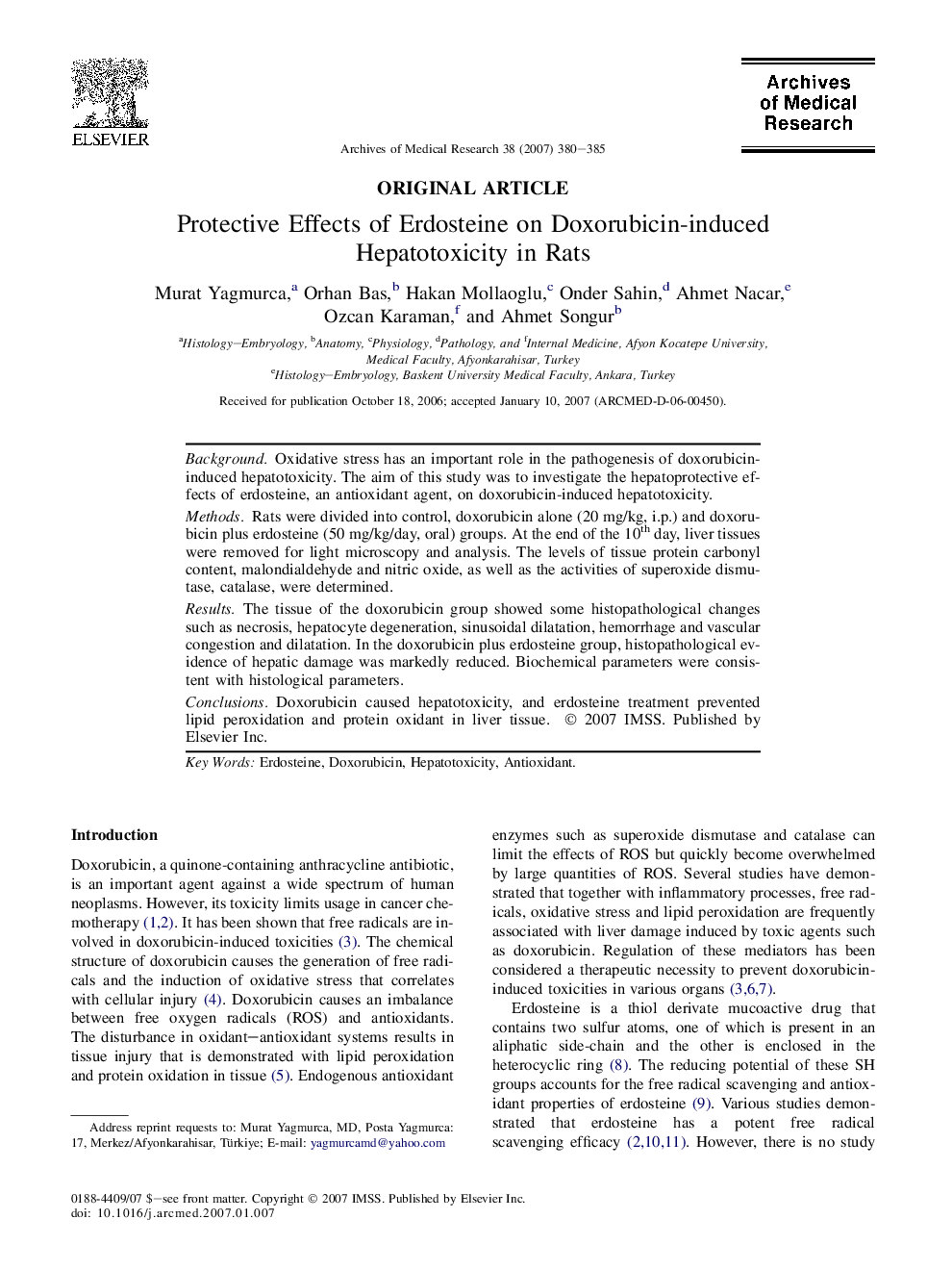| Article ID | Journal | Published Year | Pages | File Type |
|---|---|---|---|---|
| 3447780 | Archives of Medical Research | 2007 | 6 Pages |
BackgroundOxidative stress has an important role in the pathogenesis of doxorubicin-induced hepatotoxicity. The aim of this study was to investigate the hepatoprotective effects of erdosteine, an antioxidant agent, on doxorubicin-induced hepatotoxicity.MethodsRats were divided into control, doxorubicin alone (20 mg/kg, i.p.) and doxorubicin plus erdosteine (50 mg/kg/day, oral) groups. At the end of the 10th day, liver tissues were removed for light microscopy and analysis. The levels of tissue protein carbonyl content, malondialdehyde and nitric oxide, as well as the activities of superoxide dismutase, catalase, were determined.ResultsThe tissue of the doxorubicin group showed some histopathological changes such as necrosis, hepatocyte degeneration, sinusoidal dilatation, hemorrhage and vascular congestion and dilatation. In the doxorubicin plus erdosteine group, histopathological evidence of hepatic damage was markedly reduced. Biochemical parameters were consistent with histological parameters.ConclusionsDoxorubicin caused hepatotoxicity, and erdosteine treatment prevented lipid peroxidation and protein oxidant in liver tissue.
